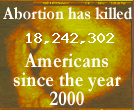Perspective
Thursday, October 04, 2007
 I found some old Foxfire books at a little used bookstore. Have you ever seen the Foxfire books? They are awesome! In the 70's, a high school teacher had his class start interviewing the local mountain people (Appalachian) and recording their (dying) way of life. They published a Foxfire magazine, which became a book, which became several books. The books are loose collections of articles.
I found some old Foxfire books at a little used bookstore. Have you ever seen the Foxfire books? They are awesome! In the 70's, a high school teacher had his class start interviewing the local mountain people (Appalachian) and recording their (dying) way of life. They published a Foxfire magazine, which became a book, which became several books. The books are loose collections of articles.Foxfire 2 tells how the people would make and wash their clothes. These people were dirt poor, and didn't have access to things even the most poverty stricken among us take for granted - like cloth, laundry soap, thread.
The chapter on weaving cloth (yes, weaving) starts with sheep. When they claim to do everything from scratch, they do mean everything.
So, they would shear the sheep, prepare the wool (wash twice in lye soa
 p, which they also made themselves), comb the wool, spin the wool to thread on a spinning wheel (sooo Rumpelstiltskin of them), then get out the loom.
p, which they also made themselves), comb the wool, spin the wool to thread on a spinning wheel (sooo Rumpelstiltskin of them), then get out the loom.There is a brief chapter on collecting indigo root, oak leaves, hickory bark, and more to create various clothing dyes. Whether it's better to use green oak leaves or to dye clothes yellow, then blue, to create a green shade is hotly debated!
The next chapter in the book details how to wash the clothes in an iron pot... it starts with building a beating bench and stick. I'll stick to Spray N Wash, thankyouverymuch! Then they would boil the clothes, rench the clothes (which seems to mean rinsing and wringing in a combined movement), hang the clothes to dry. The book includes a brief aside on how to build a trench to make lye. Lye soap is made with lye and tallow (animal fat). You get lye from drippings of water and woodashes. It's nasty, nasty stuff - very alkaline!
I'm a closet survivalist (I can tell you several ways to start a fire without matches, and how to get drinking water if you are on a desert island) (While we are on the topic, Lee the Survivorman would win against Bear Grylls anyday). I love these books!

What really brought it into perspective was this. Tuesday night at 9 pm I read about washing clothes in a pot. By midnight, three of our children had awakened with the dreaded stomach bug.
So husband dear took them into the well-lit bathroom of our temperature controlled house, washed them with soap someone else made and guaranteed not to sting sick little girls' eyes, wrapped them in a fresh cotton towel still scented like vanilla dryer sheets, and put them back to bed. Meanwhile, I took the dirty bedclothes to out other bathroom with running water, washed the chunks off, started them chugging away in the machines, grabbed a bottle of bleach spray someone else prepared for me, and wiped the tub out with papertowels, which I simply tossed in the trash. The trash that I did not have to haul to the back forty and burn later.
In the middle of what could have been a total pity party (I'll never get any sleep! I'll have to do laundry - that is, push buttons on my machine - all day tomorrow!) I was able to find thankfulness.
It's all a matter of perspective.
Labels: homemaking, Thoughtful Thursday
posted by Milehimama @ Mama Says at 10/04/2007 07:33:00 AM | Permalink |
|








